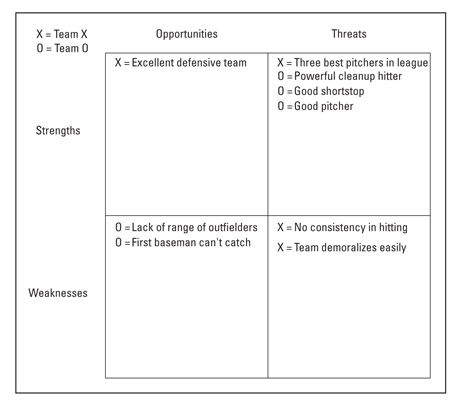The following marketing landmines masquerade as quick fixes. When the business chips are down, each of these worst ideas pops up to look like a good solution. Don't be fooled. Make sure every new idea soars above every single idea on this list.
1. Fight bad business with good advertising.
Here's the scenario: Business is down, so the owner points fingers at the economy and the competition and decides to run ads to overcome the problem. But the economy and the competition likely aren't the culprits. Business is down because customers have defected — and new prospects haven't been converted — because the company's product or service is lacking.
Running ads before improving the offering will only put a spotlight on the problem. In the words of advertising legend Bill Bernbach, "Nothing kills a bad product like a good ad." Instead, fix the product, polish the service, then run the ad.
2. Run kitchen sink ads.
A kitchen sink ad is like a kitchen sink argument in that every point — every feature, every idea, every department's viewpoint — is tossed into the mix in an effort to get more bang for the buck (a truly awful phrase that deserves its own place on the list of worst ideas). The result is a jam-packed ad featuring a long list of product bells and whistles but no clear focus and no attention-grabbing consumer benefit to seize and hold the prospect's mind.
Take aim instead: Know your best prospect and what need that person seeks to address. Then stop that person with a headline that highlights the promise of your most compelling benefit, backed by copy that proves your claim with facts.
3. Portray the customer as a fool.
Trying to be funny or grabbing attention by showing the customer as an inept bumbler wandering through life in search of your solution is hardly the way to win customers and influence buying decisions.
Form a sincere relationship with your prospect instead of poking fun at the very person you're trying to influence.
4. Save the best for last.
It happens in presentations, sales letters, and ads. Businesses wait to divulge the greatest benefits of their product until the last minute, thinking that prospects will be sitting on the edges of chairs in rapt anticipation.
Not so. If your opening doesn't grab them, they won't wait around. Four out of five people read only the headline, they listen to only the first few seconds of a radio ad, and if the first impression of a personal presentation is weak, they tune out for the rest. Eliminate slow starts and lead with your strengths.
5. Change your logo often and dramatically.
And while you're at it, change your Web site constantly. And your advertising tagline, too. It sounds ridiculous, but it's what happens when businesses let media departments, freelance artists, employees, and others create materials without the strong parameters of image guidelines to ensure a consistent company image.
If you want prospects to trust that yours is a strong, steady business (and you do!), show them a strong, steady business image.
6. Build it and trust they will come.
Sorry, but consumers aren't just sitting around waiting for the next new business, new Web site, new branch outlet, or new event to come into existence. They need to be told, reminded, inspired, and given reasons and incentives to take new buying actions. When you build it, build a plan to market it.
7. Move fast: If you snooze you might lose.
This is irresistible bait for businesses that operate without a marketing plan. They don't know their own objectives and strategies, and so any tactic sounds like a fine idea.
As a result, when a proposal comes in from an ad salesperson, an Internet business opportunity promoter, or even from a company that wants to merge or partner, the business owner is all ears, fearful that this might be an opportunity too good to pass on. Often, the idea comes with a quick deadline or the threat of involving a competitor instead, leading straight to a hasty decision.
Remember what they say about the correlation between haste and waste.
8. Think people will care that you're under new management.
Or think that they'll care that We've doubled our floor space, We've added a new drive-up window, or any other self-congratulatory announcement that produces similarly low market enthusiasm. To move the spotlight off yourself, add a customer benefit. Turn We're celebrating our fifth anniversary into We're celebrating our fifth anniversary with five free events you won't want to miss.
Remember, prospects care most about what's in it for them.
9. Believe there's a pie in the online sky.
Contrary to rampant belief, the opportunities of the cyber world aren't just ripe for the picking. The chance of opening a Web site and instantly winning business from distant new prospects is as likely as opening a toll-free line and immediately having it ring off the hook with orders.
To win your slice of online opportunity, invest time and money to drive people to your site.
10. Believe your customer is captive.
Reality is, your customers know they have other options.
If they're standing in front of you, and you turn your attention to answer a phone, they notice. If you offer new customers a better deal than current customers enjoy, they notice. If you spend more time and money courting new prospects than rewarding business from current clientele, they most certainly notice and in time will begin to disengage from your business as a result.
Realize that customer loyalty is the key to profitability, and that earning it is a never-ending process.
dummies
Source:http://www.dummies.com/how-to/content/avoiding-dreadful-marketing-ideas.html

